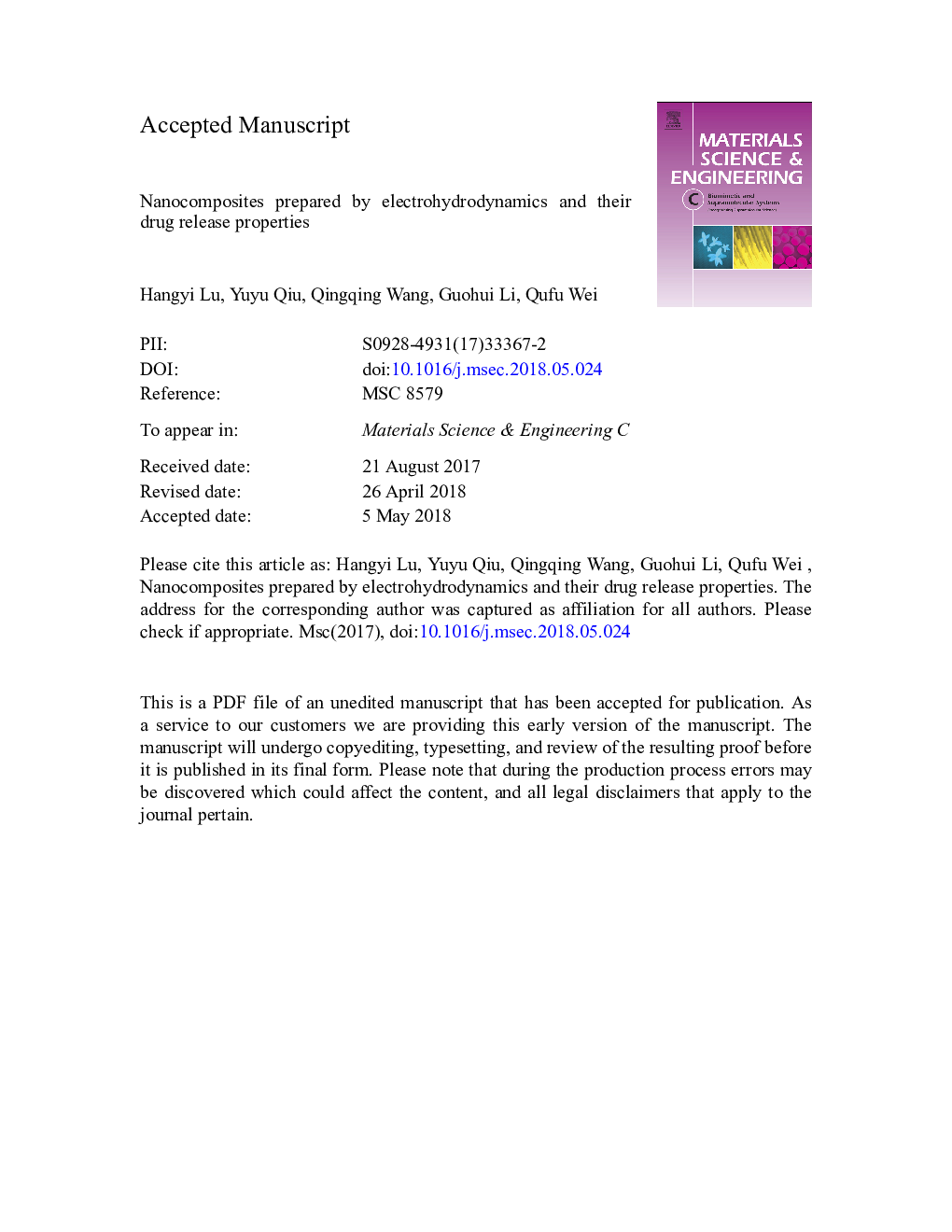| Article ID | Journal | Published Year | Pages | File Type |
|---|---|---|---|---|
| 7865654 | Materials Science and Engineering: C | 2018 | 34 Pages |
Abstract
Electrohydrodynamic method was used to produce both single-drug and dual-drug loaded nanocomposites. Zein was blended with ethyl cellulose, and the mixture was electrospun into nanofibers. Polyethylene oxide was electroprayed into nanoparticles and deposited on the nanofibrous matrix. Indomethacin and tetracycline hydrochloride were loaded in the nanocomposites as model drugs. The suitable electrospraying conditions were chosen based on the result of scanning electron microscopy. Fourier transform infrared spectra indicated that components were merely physically combined. Differential scanning calorimetry and X-ray diffraction confirmed amorphous states of the drugs in the nanocomposites. The nanocomposites displayed good wettability, water-stability and improved modulus. In vitro dissolution tests revealed a desirable drug release profile, which abided by Fickian diffusion.
Keywords
Related Topics
Physical Sciences and Engineering
Materials Science
Biomaterials
Authors
Hangyi Lu, Yuyu Qiu, Qingqing Wang, Guohui Li, Qufu Wei,
